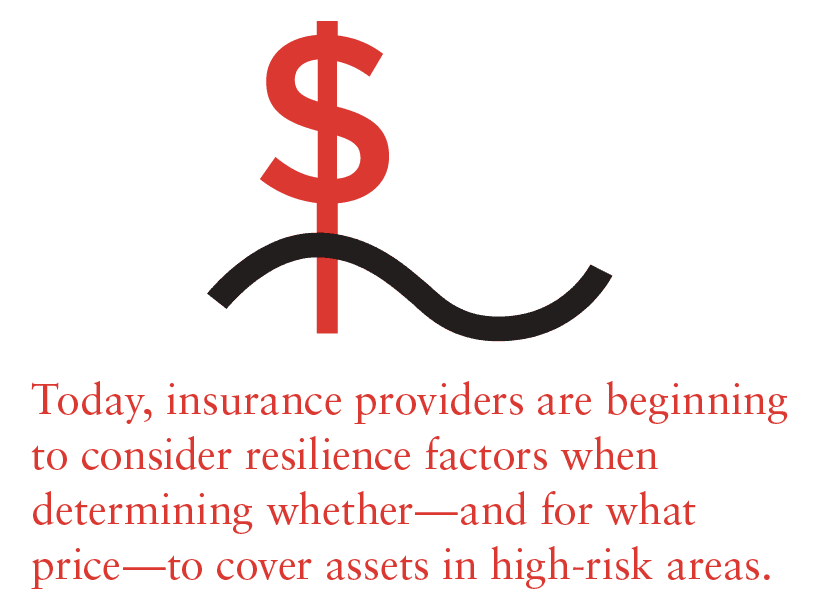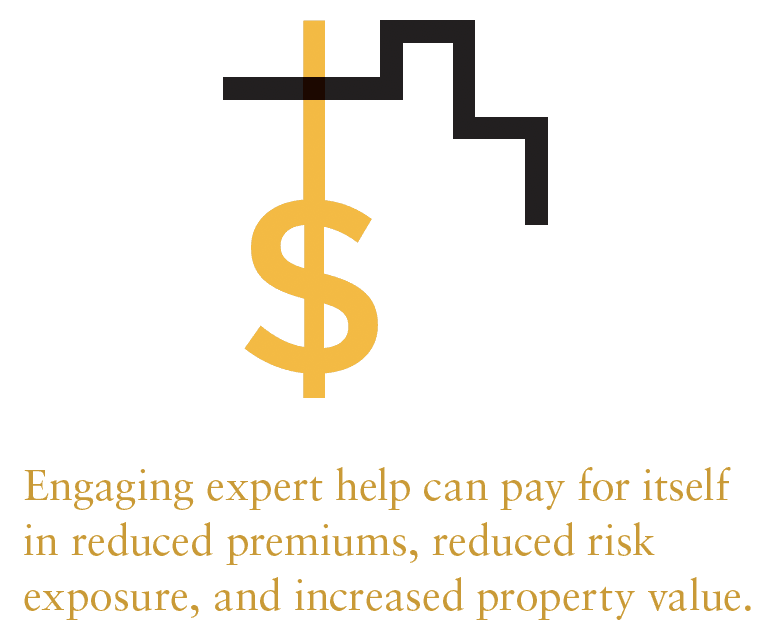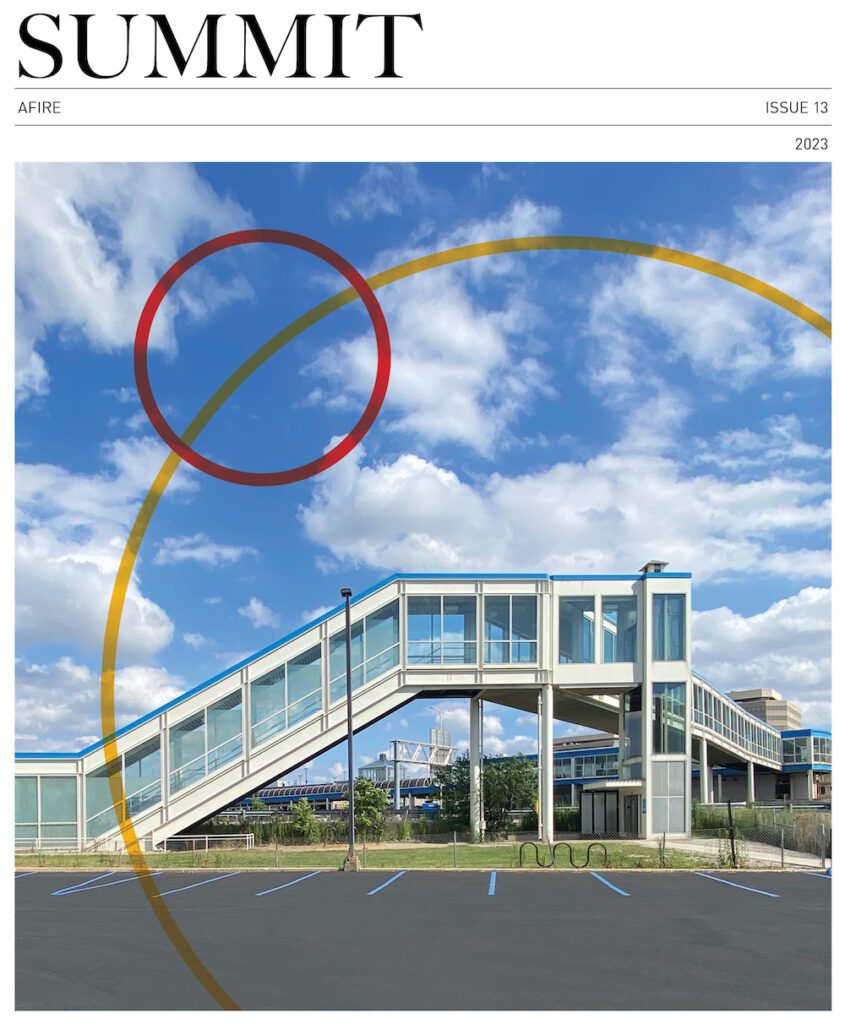By gathering key property data and providing proper documentation to insurers, CRE owners may be able to secure reduced premiums and/or coverage for properties in high-risk areas.
It’s no secret the US property insurance market is in crisis and costs are at an all-time high. Natural disasters and climate-related events have led to over $100 billion in insurable losses annually for the past five years. Premiums have doubled, and in riskier areas, risen by 500.
In addition, replacement costs have increased due to rising construction material costs and labor shortages. Underwriting is also challenging, with higher levels of scrutiny required to establish insurable value and assess risk. Some assets, particularly those in coastal or disaster-prone areas, may not be insurable at all.
Fortunately, there are tools available to support commercial real estate (CRE) investors and property owners seeking the coverage they need. A multi-disciplinary valuation approach can support accurate replacement values. And by gathering key property data and providing proper documentation to insurers, CRE owners may be able to secure reduced premiums and/or coverage for properties in high-risk areas.
IMPROVING ACCURACY IN REPLACEMENT VALUES
Marshall & Swift and RSMeans, both common sources for construction data and commercial building costs, update their costing data periodically: either monthly, quarterly, or annually.1 These periodic updates may not be frequent enough to capture the price fluctuations and volatility of the post-COVID markets, with labor and materials shortages driving up costs.2 While the lower premiums correlating to a lower estimated replacement value may be appealing, no one wants to be underinsured in the event of a loss.

In March, a tornado caused significant damage to three warehouse properties in Texas. These buildings, owned by an institutional investor, comprised a central region product assembly and distribution facility occupied by a large online retailer. Insurance coverage based on standard cost guides fell far short of the actual cost to repair and replace damaged building structural elements and systems, and further failed to adequately cover the facility’s process equipment. The event prompted the institutional investor to request development of a custom scope to value the repairs, improvements, and equipment at the subject facility, and also take a critical look to identify similarly under-insured assets in their portfolio.
In another example, an investment management firm realized that they were grossly underinsured at three logistics warehouses in the southeast. Their existing policy used Marshall & Swift numbers. Plus, the long-term tenant of these buildings, an online retail juggernaut, had made significant improvements to the base buildings. The investment firm needed to realign the insurance replacement value to factor in actual condition of the building systems, understand the enhanced value from tenant improvements, and incorporate a reality check on construction material and labor costs.
Key to the efforts in establishing accurate insurance replacement values is going beyond industry cost guides to observe and document specific conditions of the building systems at the property. Professional observation and judgement, along with collaboration with building maintenance and local contractors, commonly leads to adjusting repair and replacement estimates either up or down from the guide. Recent regional construction budget data and national construction data by asset type that consider size, type, use, geography, environment, and trends can be correlated for insight and justification of actual construction budget data. Engineering and construction expertise and data, layered with asset valuation and equipment appraisal, form a richer valuation methodology than relying on standardized guides. Comparable sales references consider the quality of the tenant and remaining lease term, and specialized process equipment expertise fill gaps in the common insurance replacement value calculations. While there is no guarantee of actual construction costs in the event of an insurance loss—especially those related to natural disasters that often create a surge in the price of labor and materials—this multi-pronged approach provides a researched, justified, and defensible solution to a complicated underwriting process to get policies done or renewed.
RESILIENCE DATA FOR UNDERWRITING
With wildfires and earthquakes in the West, hurricanes and severe storms in the East and South, and tornadoes and severe storms in the Midwest, it’s tough to name a location that doesn’t qualify as disaster-prone. Insurance providers are reluctant to take on properties in “high-risk” areas, and if they do, rates can be astronomical. In the past, insurers based this high-risk status on location alone, with little regard for the building’s construction or resilience. Today, insurance providers are beginning to consider resilience factors when determining whether—and for what price—to cover assets in high-risk areas.
The underwriting process in these determinations involves a very high level of scrutiny of the construction and resilience features of each property. Simply put, generating data to help inform insurance underwriters of key resilience-related attributes assists insurers in moving forward or reducing inflated premiums.
For example, to alleviate the underwriter’s concern about the risk of flood damage to an electrical room, demonstrate resilience measures such as:
- Relocate susceptible equipment above predicted flood levels with waterproof enclosures to address flood concerns.
- Confirm clear roof drainage including condensate lines from HVAC equipment and proper drainage away from the foundation.
- Take (and document) action to ensure water does not pond on the roof or the building perimeter.
- Dig swales to move stormwater runoff away from a property.
- Choose gravel or brick pavement in areas nearest the building instead of concrete or asphalt.
In addition to having an emergency response plan to continue operations, practical, documented mitigants can make the difference during hazardous and challenging conditions.

With the frequency and number of severe weather and climate-related events over the past several years, insurance carriers are becoming increasingly sophisticated regarding risk and resilience factors related to building construction. Many will require a completed questionnaire scrutinizing the construction details of a property and its systems.
Recently, a developer seeking to acquire a portfolio of 23 buildings in Naples, Florida—very near the site of Hurricane Ian—learned just how granular that scrutiny can be. Beyond the basics such as construction and occupancy class; year of construction and any upgrades; age/type of roof; and so forth, the insurer required detailed information on building components, including cladding (covering or coating) rating, roof sheathing (decking) attachment, and the wind resistance of virtually every aspect of the building envelope. The granularity on wind-related factors included details on roof geometry, roof anchors, roof flashing (metal that directs the water) and coping (sheet metal that caps the vertical wall on a roof), and wind bracing for any rooftop equipment.
Much the way previous conflicts and liabilities prompt the addition increasingly specific and numerous clauses to other types of contracts, this insurer had become very savvy to exactly which systems, components and attributes affected their risk exposure, and they would not underwrite the developer’s portfolio without examining each in detail.
In response, the developer added a custom scope to its due diligence services for each site. The scope, referred to as an “Insurance Resilience Supplement,” was a supplement to the Property Condition Assessment (PCA) scope already being performed at the 23 sites. Leveraging the experienced condition assessment professionals already deployed to the site made sense, given the overlapping expertise in building systems required by PCAs and the insurance questionnaire, and the convenience of gathering data for the questionnaire and PCA in the same site visit. These site observations, along with research of historic records, photos, and plans, were used to satisfy the insurer’s requirements.
SUPPORT FOR INSURANCE CHALLENGES
Changes in the insurance market and the increased demand for resilience in general may leave many commercial real estate owners and managers with questions, such as:
- What is the true replacement value of my CRE asset(s)?
- How resilient is my property/portfolio/target acquisition?
- How can I improve resilience?
- How can I document/demonstrate resilience to insurers?
While they appear daunting, insurance challenges can be overcome with the right data and documentation. Some measures may be complicated and involve multiple disciplines such as engineering, construction, sustainability, and valuation. In these scenarios, engaging a multidisciplinary consultant who can handle complex scenarios and evaluate CRE assets through a variety of lenses can be invaluable.
A partner with full-service capabilities can assess the current state of a portfolio, recommend resilience improvements based on business objectives (insurability, rates, resale, risk management, etc.) and help implement and document those improvements. Engaging expert help can pay for itself in reduced premiums, reduced risk exposure, and increased property value.
IN THIS ISSUE

NOTE FROM THE EDITOR: WELCOME TO #13
Benjamin van Loon | AFIRE
OFFICE TROUBLES: FINANCIAL RISKS AND INVESTING OPPORTUNITIES IN US CRE
Dr Alexis Crow | PwC + Byron Carlock
THE UNDERPERFORMANCE PARADOX: WHY INDIVIDUAL INVESTORS FALL BEHIND DESPITE BUYING LOW
Ron Bekkerman | Cherre + Donal Ward | Tenney 101
CLIMATE THREAT: EXTREME WEATHER IS THE NEW NORMAL FOR REAL ESTATE
Jacques Gordon, PhD | MIT
CLIMATE OPPORTUNITY AWAITS: HOW REAL ESTATE CAN INVEST IN CLIMATE ADAPTATION
Michael Ferrari, PhD and Parag Khanna, PhD | Climate Alpha
PREMIUM PRICE TAGS: INSURABILITY THROUGH PROPERTY RESILIENCE DATA
Bob Geiger | Partner Engineering & Science
REAL ESTATE WEB3: THE EMPEROR’S NEW CLOTHES OR THE NEXT BIG THING?
Zhengzheng Tan, Alice Guo, and Naveem Arunachalam | MIT
ADAPTIVE TO REUSE: COULD BUILDING CONVERSIONS BE DIFFICULT, EXPENSIVE . . . AND STILL PROFITABLE?
Josh Benaim | Aria
RENOVATE, REBRAND, REPOSITION: ADDING VALUE TO MULTIFAMILY THROUGH REVITALIZATION
Robert Kilroy, CFA | The Dermot Company + Will McIntosh, PhD | Affinius Capital
REDEFINING THE PROGRAM: A CONVERSATION WITH ARCHITECT DAVID THEODORE
Peter Grey-Wolf | Wealthcap + David Theodore | McGill University
SENIOR HOUSING UPDATE: EMERGING OPPORTUNITIES THROUGH DEMOGRAPHIC TAILWINDS AND DIMINISHING SUPPLY OUTLOOK
Robb Chapin, Jack Robinson, Andrew Ahmadi, and Morgan Zollinger | Bridge Investment Group
SENIOR HOUSING UPDATE: UNPRECEDENTED DEMOGRAPHIC ACCELERATION MAY DRIVE STRONG OPERATING FUNDAMENTALS AMID ECONOMIC SLOWDOWN
Tom Errath | Harrison Street
HOLIDAY FROM HISTORY: REASONS FOR US OPTIMISM IN A CHANGING GLOBAL ENVIRONMENT
Charlie Smith | Newmark
CRADLE TO CRADLE: AN ALLOCATOR’S VIEW ON IMPLEMENTING ESG INITIATIVES
Christopher Muoio and Katie Cappola | Madison International Realty
FREE LUNCH: MULTI-DIMENSIONAL DIVERSIFICATION IS A FULL-COURSE FREE MEAL
Elchanan Rosenheim and Tali Hadari | Profimex
CAMPAIGN MESSAGING: CFIUS, AFIDA, AND EXPANDING FEDERAL AND STATE RESTRICTIONS ON FOREIGN INVESTMENT IN US REAL ESTATE
Caren Street, John Thoms, and Anya Ram | Squire Patton Boggs

—
ABOUT THE AUTHOR
Bob Geiger is Principal, Executive Director, for Partner Engineering & Science, a national provider of multidisciplinary engineering, environmental, construction, energy, and technology services for real estate owners and investors.
—
NOTES
1. https//www.corelogic.com/wp-content/uploads/sites/4/downloadable-docs/marshall-swift/1-msvs-1909-01-marshall-swift-valuation-service_scrn.pdf; https://www.rsmeans.com/#:~:text=RSMeans%20Data%20Online%20provides%20cloud,data%20available%20for%20construction%20estimating.
2. https://www.spglobal.com/marketintelligence/en/news-insights/research/labor-and-materials-shortages-drive-costs-higher
—
THIS ISSUE OF SUMMIT JOURNAL IS PROUDLY UNDERWRITTEN BY

For more than 20 years, Yardi has developed real estate investment management software that helps managers of global assets valued at trillions of dollars make informed investment decisions. Yardi Investment Suite clients include many of the world’s premier investment management funds, start-ups and partnerships of all types and sizes.
Real estate investments grow on Yardi. That’s because the Yardi Investment Suite automates complex investment management processes and provides full transparency, from the investor to the asset. Through interactive dashboards, investors can view documents and have access to reports and metrics. Collaboration is easy when your advisor or accountant is given access to view your accounts, reducing the need for emailing sensitive information.
The Yardi Investment Suite leads the real estate industry through innovation and value with fully integrated investment management, property management and accounting functionality. Fund managers and their customers can manage assets with superior efficiency and ease. Learn more.

